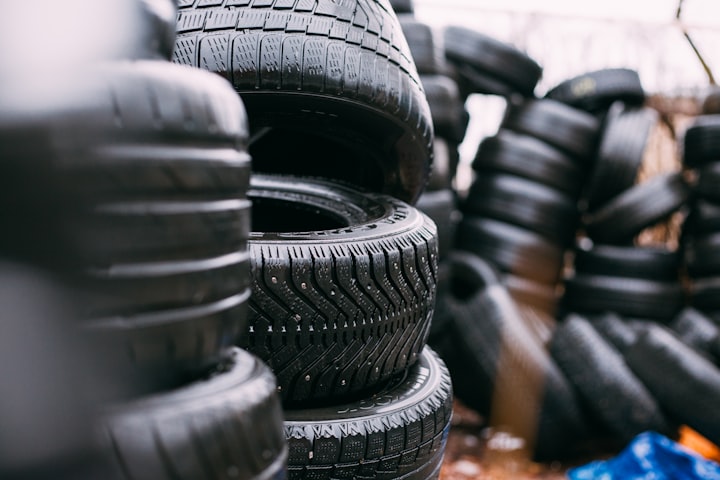Will the Rubber Shortage Affect Prices of Tires?
Natural rubber is running out, and industry watchers worry about the looming global rubber shortage.

Experts are getting worried about the shortages happening in the supply chain, which affects the automotive industry. The pandemic has worsened the semiconductor supply shortage. Now, the automakers have to face another challenge that will affect their vehicle production.
Will the supply shortage alter the price of tires? Can we still afford brand-new tire and wheel packages for our vehicles in the upcoming years? The resources for natural rubber are running out, and the industry watchers worry about the looming global rubber shortage.
Importance of rubber
A National Geographic article explained the importance of rubber as an element that played a significant role for more than 150 years in environmental and global political history. It also played a huge part in the industrial revolution. Three raw materials were mainly used—iron to create steel, fossil fuels to power the machinery, and rubber to connect all the moving parts.
Synthetic rubber is cheaper but less flexible and cannot withstand high vibrations. Aside from automotive parts, natural rubber is the material for creating many products like surgical gloves, baby products, toys, and even condoms (since the latex comes from the bark of a specific rubber tree called Hevea Brasiliensis.)
Most people think that all rubber products come from synthetic chemicals. When in fact, more than 40 percent of the rubber in the world comes from trees. Indeed, there are products made of synthetic rubber because they are cheaper to produce than natural-made.
The EU included natural rubber in their list of critical raw materials. It has global importance because it is a crucial raw material for creating tires for vehicles and airplanes. Natural rubber is one of the essential raw materials used by the automotive industry. The wheels and tires of any car cannot be complete without the rubber material. Vehicle manufacturers use them to make seals for engines and other parts for most fuel-running cars.
Natural rubber affected by climate change
Only selected areas can grow natural rubber plants since they need an annual mean temperature of 26 to 28 degrees Celsius (78.8 to 82.4 degrees Fahrenheit). The trees can only thrive in damp and humid regions near the equator. Today, 90 percent of the natural rubber production occurs among countries like Thailand, Indonesia, Vietnam, India, and more.
Climate change is associated with frequent and intense natural disasters that impact the growth of rubber plants. The world is experiencing global warming. Therefore, some areas may be prone to drought. Too much rain causes disease on the leaves from a fungus called Phytophthora, common in humid conditions. Farmers also worry about the white root disease and other leaf blights, significantly damaging rubber trees. These leaf diseases came from neighboring palm plantations.
As the weather becomes more unpredictable and irregular, it continues to risk rubber tree cultivation. The sudden weather changes decrease the number of rubber trees they can tap, disrupting the supply.
The dry and wet spells become more frequent, which affects the yields and livelihoods of rubber farmers. As a result, young and fully grown rubber trees are dying. Many experts believe that the difficulties in the rubber industry will intensify as climate change persists.

Addressing the problem of rubber production
The Intergovernmental Panel on Climate Change of the United Nations (UN) projects that the temperature will rise by 2 degrees Celsius or more by the end of the century. This analysis brings a more uncertain future for the rubber-growing areas today.
The countries that grow rubber trees will experience more unpredictable rainfall patterns. Also, droughts and rising temperatures affect rubber yields.
It takes seven years for the rubber plants to mature, but the rubber tappers only receive small incentives to plant new trees. There are more advanced and better cultivation methods that rubber growers can adopt. However, they will need more support.
The growing demand for rubber supply may sound like positive news to the farmers, making their yields more profitable to grow. However, that is not what’s happening because the price of natural rubber has nothing to do with the production costs. The pricing per ton may vary from one month to the next. The price of rubber last March was $2.37 per kilogram and decreased in August to $1.9 per kilogram.
According to researchers, rubber growers can boost their resilience using proper cultivation methods. They can do agroforestry to prevent moisture loss in the soil and develop the nutrients in it. Also, this method can potentially increase the earnings of the farmers.
New challenge for the auto industry
The global chip shortage continues to cost the industry billions of revenue losses. Automakers must face another big problem that will affect their vehicle production, and it is the world’s dwindling rubber supply.
Aside from the pandemic, the supply chain dilemma triggered the assembly plant shutdowns and temporary work shift cuts. The car manufacturers have to deal with production woes that affect their newly released models and inventories of other existing vehicles.
China is one of the leading rubber distributors of natural rubber, but many companies there made big purchases last year. They did it to replenish their rubber supply reserves when the economy opened up.
By December of 2020, the manufacturers from the United States who held back on ordering rubber supplies during lockdowns were scrambling to secure stocks. Since many sectors and companies tried to get their hands on the available raw materials, others have to compete with the remaining rubber stock.
A new resource of rubber
Manufacturers used synthetic rubber derived from petrochemicals to produce most tires for passenger cars. However, tire manufacturers create tires for larger and heavy-duty vehicles using natural rubber from the milky sap of the Hevea Brasiliensis plant.
The tires for agricultural equipment and heavy work trucks need more natural rubber in the tire compound. These tires have better shear resistance than synthetic rubber-made tires. They are more durable, have load-bearing capabilities, and are resistant to cuts and punctures. Moreover, they improve the rolling resistance and handling of the vehicle.
Since there’s a shortage in natural rubber supply, some companies in the auto industry try to search for other ways to cope with the situation. The tire manufacturer, Bridgestone, is developing natural rubber that comes from a woody shrub called guayule. In 2012, they began experimenting with guayule. Then in 2015, they created the first tires from the rubber material.
In an interview, Dave Dierig, Bridgestone’s agro-operation manager, said they worked on the material to ensure its quality. They are still in the testing phase, but they have done various tire builds and conceptualized different tire formulations for light tires to larger truck tires.

Declining rubber supply in the US
Some tire companies in the US gave their statements to news interviews regarding the impending natural rubber shortage:
Continental said they see the "widespread shortage" only as a short-term problem.
Goodyear said they experienced tight supply late last year, but they currently have enough material supply in hand.
Bridgestone said they’re keeping an eye on the supply chain as the demand for their commercial tire remained high through the pandemic.
In February of 2021, the prices of rubber hit a four-year high. China was able to stockpile rubber as they have the highest demand and the largest consumer of natural rubber in the world. But aside from the overstocking issue, the lack of shipping containers is another reason why most industries in the US could not get more rubber supply.
Retire the old tires
The concerns over the low supply of rubber have not yet caused panic to the consumers. Due to continued pressure across most manufacturers on the cost of raw materials, labor, and distribution—expect a price increase soon.
Did you change the worn-out tires on your truck yet? It may be the best time to replace them.
About the Creator
Jen Demkin
Hi, I'm Jen from 4WheelOnline. My fascination with vehicles started in my childhood. I like cars more than dolls. I enjoy writing about automotive industry news, vehicle maintenance tips, and more.






Comments
There are no comments for this story
Be the first to respond and start the conversation.